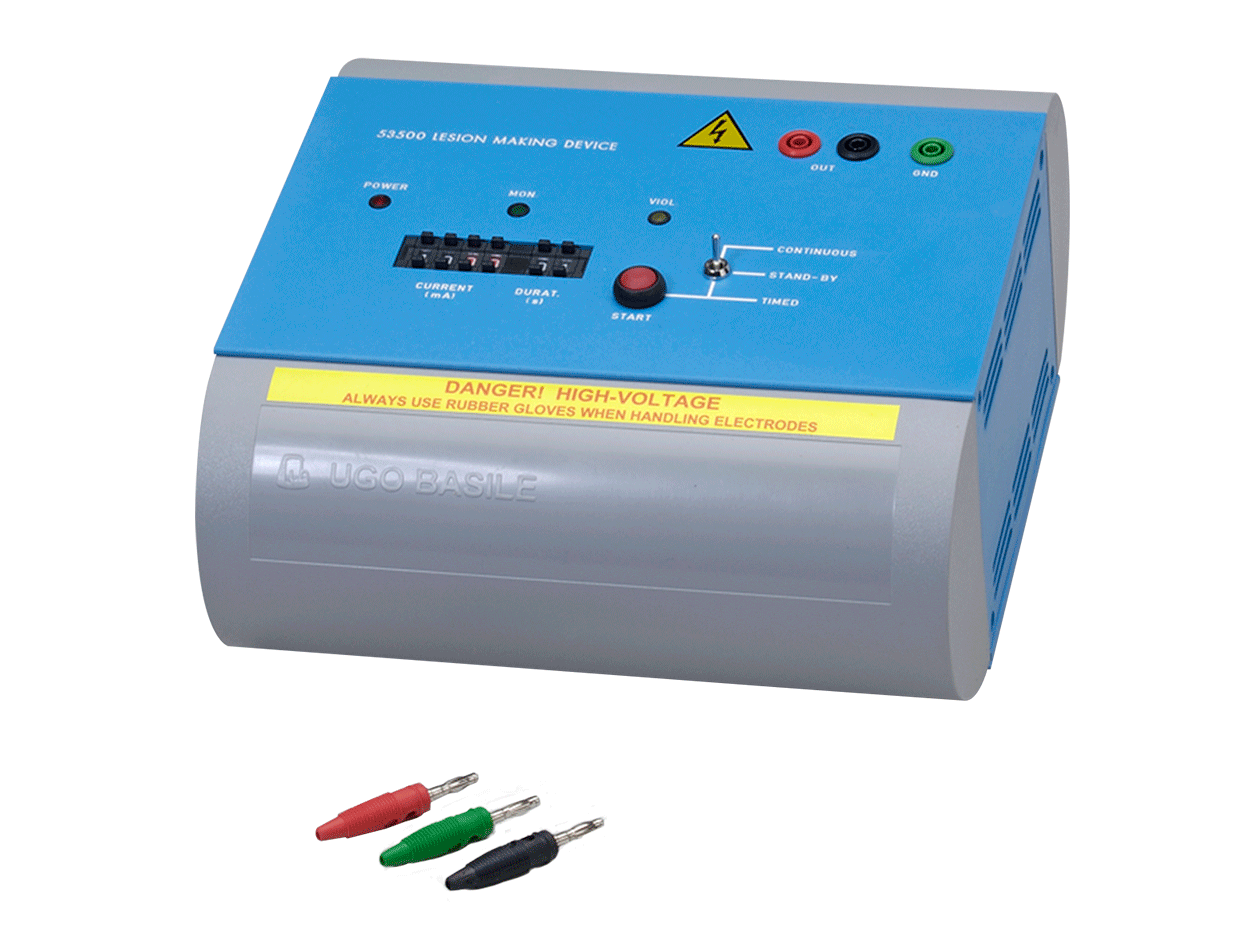產品資訊
產品資訊
電燒損傷製造器 Lesion Making Device
產品型號: 53500
廠牌名稱: Ugo basile
Ugo Basile外傷製造器專為小動物製造局部的電損傷,它的直流電以無限電頻率輸出。由於具有以連續或計時的方式操作的恒定電流發電機,因此儀器可獲得穩定電源。發電機可防止由電極意外與其他電極相連而阻止電流流通的短路。在設計時,特別注重一個良好的電路輸出/地面絕緣設計。這除了提高了運行的安全,還最小化穿過組織的混亂電場線,控制器有預設功能。
產品特點
The Ugo Basile Lesion Maker has been designed for the production of localized electrolytic lesions in small animals where DC is preferred to RF, to produce the lesion.
It features a regulated power supply combined with a constant DC current generator which operates on either continuous or timed mode.
The current generator is protected against short circuit, which prevents the electronics to get damaged due to the electrodes coming accidentally in contact with each other.
Particular emphasis has been placed in the design of a good circuit output/ground insulation.
This feature, besides enhancing safe operation, minimizes spurious current field lines across the tissue, outside the pattern the operator has preset.
產品規格
| Operation | |
| Lesion Making Device | DC Constant Current |
| Current Range | from 10 µA to 99 mA |
| Compliance Voltage | 200 V DC |
| Max. Electrode Resistance | 20 MOhm (10µA) down to 2 KOhm (100mA) |
| Power Monitoring | via red LED |
| Current Monitoring | via green LED |
| Violation Monitoring | via yellow LED |
| Power Requirement | 115 or 230 V, 50/60 Hz, 20 W max. |
| Operating Temperature | 10° to 40° C |
| Sound Level | <45dB |
| Physical | |
| Total Weight | 1.4Kg |
| Shipping Weight | 3.7Kg approx. |
| Dimensions | 27(w)x25(d)x13(h)cm |
| Packing Dimensions | 45x34x26cm |
應用領域
The surgically or electrically induced lesion has served as an important tool in the exper-imental search for function in the CNS. Its value has derived in part from the simplicity with which it can be used to study neural mechanisms of behaviour at a basic level.
The advent of the stereotaxic technique, moreover, allowed researchers to produce dis-cretely placed lesions with consistency, especially in sub-cortical structures of the brain.
The strength of the lesion technique resides also in the variety of ways with which to ap-ply it. Manipulating the type of lesion (DC, RF, knife cut, etc.), its size, the type of elec-trode, the angle of entry, and so on, should continue to expose critically important as-pects of neural functions because of the different effects that are produced.
It is no coincidence that the history of the development of these techniques is closely tied to the recent history of theories regarding localization of function in the brain. The tradi-tional view, whose basic tenets are that (1) the functions are represented in discrete brain structures and that (2) the lesions disrupt function by removal of functional tissue in circumscribed sites, have been recently challenged by growing evidence of the importance of secondary changes.
These are induced by a lesion, both directly (necrosis, anterograde and retrograde de-generation) and indirectly (transneuronal degeneration, regeneration and sprouting, al-teration of neurochemical pools, vascular disruption) and may comprise the more signifi-cal neurological changes which can account for alteration of behaviour in a lesion exper-iment.
New strategy of research utilizing lesions is proposed, suggesting that greater emphasis be placed on the a posteriori assessment of secondary changes in the brain as they are correlated with changes in behaviour.




